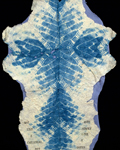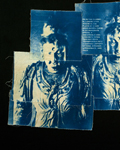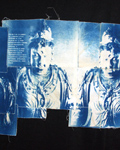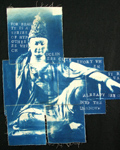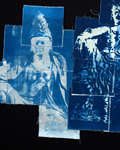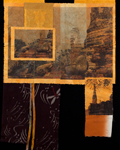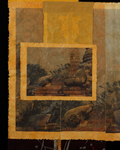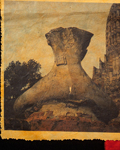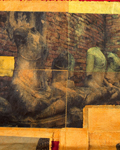JOHNS HOPKINS UNIVERSITY, 2002
from the artist’s statement:
This textile show explores the contemplative space generated by the thousand-year-old sculptural images of Kuan-Yin, the bodhisattva of compassion in Chinese Buddhism. Also known as Avalokiteshvara in Sanskrit and as Kannon in Japanese, Kuan-Yin, like other bodhisattvas, has a complex ontological standing: among others, as a future or past Buddha, and as an enlightened being who has vowed to forego Nirvana until all other beings have become enlightened. In popular Chinese devotion – not only among Buddhists – Kuan-Yin is still occupied daily in protecting beings and dispensing good things.
On many people, the Kuan-Yin sculpture of the late T’ang and Sung (around the turn of the last millennium) exerts a powerful influence. The period was also a transitional one in human understandings of Kuan-Yin: up to about the eighth century, the bodhisattva was usually portrayed as a man, while after about the twelfth century, Kuan-Yin in China was generally seen and known in female form. The magnetic Kuan-Yins of the intervening centuries are often much harder to classify in terms of gender. My own thought and hope is that, even in the expression of a strong sensuality, many of these regal and loved divinities may not have been shaped or perceived through the eyes of gender at all.
One of the reasons Kuan-Yin became so popular in China is thought to have been the bodhisattva’s responsiveness to certain currents in Taoist thought and iconography. The pieces in “Bodhisattva Fractal World” come out of an aesthetic, what the Japanese call wabi-sabi, that similarly resonates with the Tao. The near-aleatory effects of suminagashi (ink floated on water) and the fractal dimension-bending of shibori (bound resist dyeing), like the subtly unfolding haiku of Zen monks nearing the end of their lives, suggest many connections between contemporary understandings of chaos and complexity, on the one hand, and on the other, a group of ancient East Asian embodiments of wisdom and compassion.

